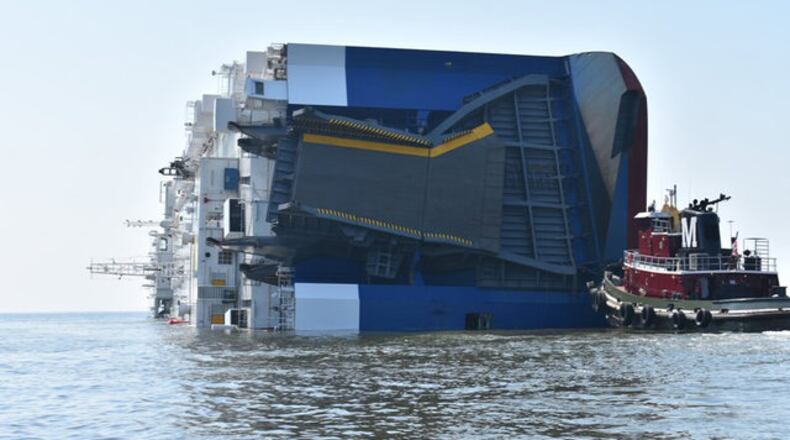A salvage company that worked on the Golden Ray shipwreck off the Georgia coast has filed a lawsuit against the U.S. Coast Guard alleging that the agency’s decisions are almost certain to cause an environmental disaster in Port of Brunswick.
The lawsuit, filed just days before salvage crews were set to begin erecting an environmental protection barrieraround the ship, was accompanied by a request that any further work on the wreck be stopped.
The ship is scheduled to be cut up and removed from the water in pieces.
A spokesman for the Unified Command collection of agencies working on the removal efforts said they were aware of the lawsuit.
"All St. Simons Sound Incident response activities will continue as planned unless or until directed otherwise," read a statement from the agencies.
DonJon-SMIT, the company that filed the lawsuit, was part of the initial team contracted to remove the Golden Ray from the St. Simons Sound. The 656-foot Golden Ray overturned in Sept. 2019 near the Port of Brunswick carrying 24 crew members and a cargo of 4,200 cars. All crew members were rescued but the cars have remained on board, presenting a “substantial threat of discharge” according to the lawsuit.
Lawyers for DonJon-SMIT, did not immediately return calls for comment.
Under the Oil Pollution Act of 1990, created in response to the Exxon Valdez spill the year before owners of non-tank vessels carrying oil have to submit a response plan to the Coast Guard for large fuel discharges. Once approved, the plan should only change under exceptional circumstances and with approval from certain leaders, said the complaint.
DonJon SMIT, a maritime salvage company registered in Delaware, was the designated salvage provider who assisted in rescuing trapped crew members, stabilized the ship and removed about 300,000 gallons of fuel from fuel tanks on the vessel.
But the lawsuit claims that after the company submitted a proposal for the removal of the ship, the ship's owners rejected the plan and put the project out for bids.
DonJon’s proposal included cutting the ship into smaller sections of about 600 tons which would allow controlled removal of the cars inside and reduce any discharge of fuel into the water, according to the complaint.
In contrast, the approved plan calls for cutting the ship in eight sections of about 4,100 tons.
>> READ MORE: Plans set for removal of capsized cargo ship
The lawsuit claims that in previous cases when capsized ships were removed in large sections, after a few sections were removed, the remaining sections collapsed resulting in additional pollutants in the surrounding water.
The lawsuit also claimed the proposed size of the environmental protection barrier in the approved plan would make it harder to navigate nearby waters and that transporting the larger-sized sections by barge could also pose a risk.
On Friday, Unified Command is hosting an open house during which community members can speak with experts about the wreck removal plans, the environmental protection barrier, and how any environmental impacts will be reduced.
About the Author
Keep Reading
The Latest
Featured




